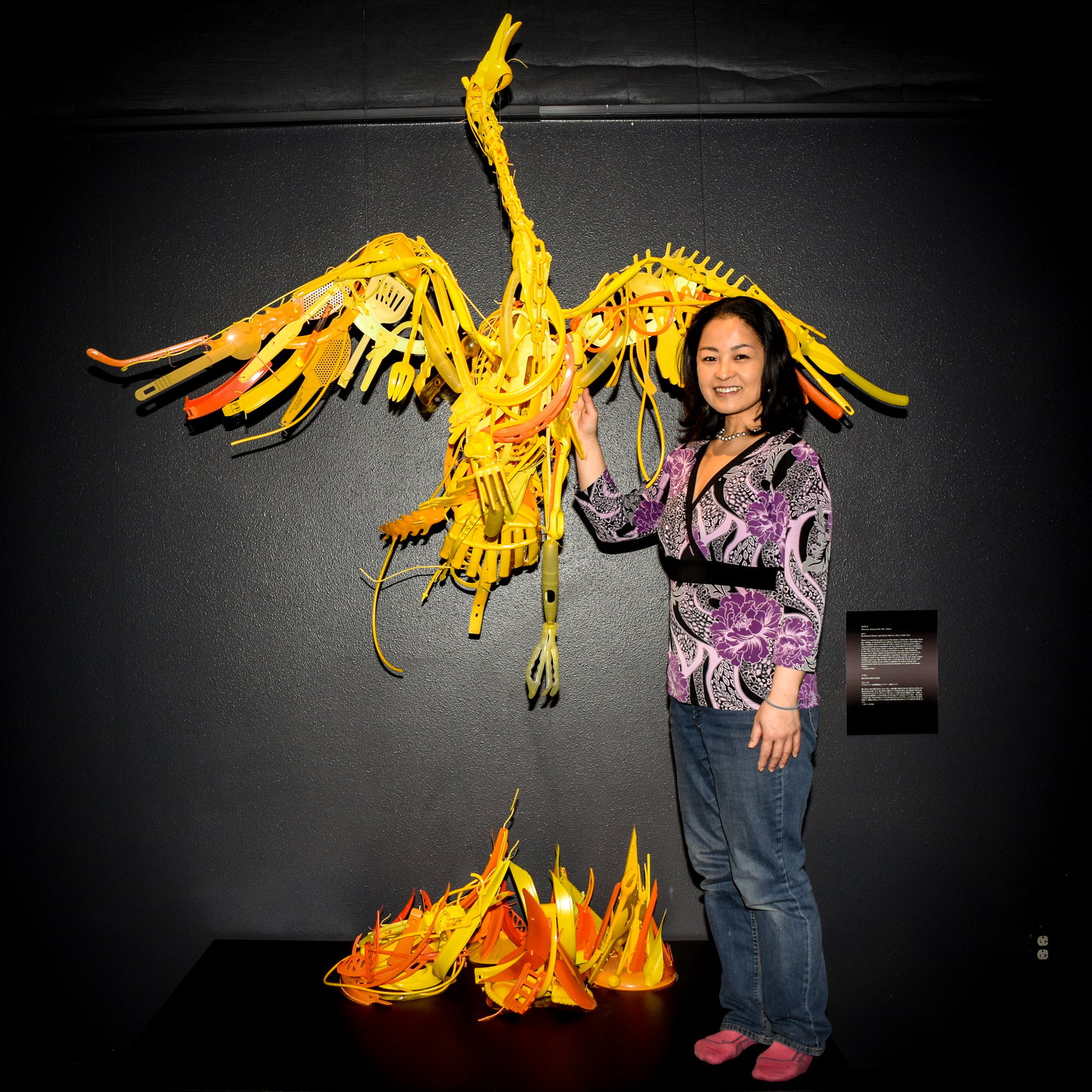Sayaka Ganz takes old spatulas, spoons, clothes hangers and other such ubiquitous household plastics and finesses them into graceful sculptures of animals in motion. She says that the spirit of an object is saddened when it is discarded before its usefulness is over. She says that her sculptures bring these objects a new purpose and the viewer, hopefully, the realization that beauty can be found in reordering our perceptions towards the deposable objects in our lives. Ganz’s new show Reclaimed Creations, open through May at the New Mexico Museum of Natural History & Science, is the perfect venue to have a conversation about how we treat our everyday objects and their place in our environment. Why do we throw out so much stuff? Where is the beauty in that? Weekly Alibi sat down with Ganz at the museum to talk about plastic, process and the tyrannosaurus in the lobby. The following is an edited version of that conversation. Weekly Alibi: Michelangelo said, “I saw the angel in the marble and I carved until I set him free.” Do you see animals in the trashcan?Sayaka Ganz: I don’t necessarily see it that way, but I definitely see this sadness in the items that I find at the thrift stores and in the trash. If I see a serving spoon on the shelf of a thrift store, it really doesn’t make me want to take it back to my kitchen to use it to cook with, but at the same time they were designed by somebody to fit your hand. These designs are quite beautiful sometimes. I guess maybe because I grew up moving a lot and having difficulties fitting in at times at different schools, maybe it just gives me an extra yearning to have a place to belong to and it makes me want to find a place for them to belong also. There is an inherent sadness to waste. Do you see joy in your creations?I feel like when I can put them in an animal form that really looks alive, joyful and emotional, then I’m making them happy.How do you perceive the energetic transformation your work goes through from a static, discarded object to an animal full of motion?I feel like it’s creating a flow. I do that by aligning these objects together in a way, like an Impressionist painting. I am very aware of the directional line quality that I’m creating with the collection of the items. I’m always very careful not to put any vertical lines that block the flow of movement I’m trying to create visually. It’s almost like coaxing a group of collaborators to go in the same general direction. Tell me a little bit about your collecting process. I’ve been collecting since 2006. I have a huge collection now. I have storage units. I’ve got like maybe 50 or 60 bins all sorted by color. Over the years I’ve discovered that some plastics are a little too brittle for me to use, they break easily or some shapes are just not that great for what I want to do. So, I’m becoming more selective, but still my collection only grows.How do you choose your animals?It depends. When I started, I was choosing from the movement. I started doing the plastic sculptures when I was in graduate school. I was just thinking in terms of the variety of the direction of movement I wanted to create. Now, most of the time, because I have storage units and so many of my sculptures are very large, I tend to not start a big project unless I have a specific venue that’s requesting something or I have a commission. All of your works are of extant creatures with the exception of the Phoenix, which is fictional. Here in the natural history museum, so much of what is shown are extinct creatures. Have you considered creating an extinct animal?Wow. That’s something I haven’t really thought about that. But now, here seeing the tyrannosaurus in the lobby, yeah, I would love to.What do you hope that the viewer sees in your work?I think the main thing I’d like to communicate is the potential and beauty of these plastic items. So many people say to me, “Oh, I hate plastics. They are such a problem.” And yes, it’s true, but it’s really us. It’s what we do with the plastics. That’s the problem. And at the same time, we’re so dependent on these plastic items for our lives. If we can learn to respect and be more careful about how we produce them and dispose of them, that’s a lot more positive than us saying, “Oh, they’re all the problem,” and trying to get rid of all of the plastics at the same time, then discovering that we cannot, really.
Reclaimed CreationsBy Sayaka GanzOn exhibit through May 17New Mexico Museum of Natural History & Science1801 Mountain Rd. NW











